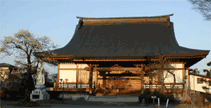  |
Lesson 12: It's in the
car.
Click here for the kana version.
| Recall
from Lesson 4 that we learned how to say that the location of something
is here, there, or over there. This is useful information if you can see
something or are pointing at something. However, what if you can't see
the location you are talking about, or you want to explain where something
is in relation to something else?
First, there are two different ways of saying something exists. One is for animate things (people and animals) and one is for inanimate things. These are the verbs imasu and arimasu. These both mean "to exist." Imasu is used for animate things and arimasu is used for inanimate things. To ask where a place or inanimate object is, one can use the form: XX wa doko ni arimasu ka. Where is XX? For people and animals, imasu is used instead: XX wa doko ni imasu ka. Where is XX? Note the use of ni. Ni was previously shown in lesson 7; its meaning here is slightly different. Ni in this case means 'at.' Doko ni means 'at what location.' Similarly, koko ni would mean 'at this location.' The above sentences literally translate as 'As for XX, at what location does it exist?' In order to say where something or someone is, just replace the 'doko' with the location.
|
|||||||||||||||||||||||||
|
Examples: Maiku-san wa doko ni imasu
ka. Neko wa doko ni imasu ka. Watashi no ringo wa doko
ni arimasu ka. Kaban wa doko ni arimasu
ka. |
Where is Mike? Mike is at school. Where is the cat? Where is my apple? Where is the briefcase? |
||||||||||||||||||||||||
OK, now we can move on to specific locations. Where exactly is the cat? Is it under the desk? Inside of a box? Is the book in the bookshelf or on top of it? We will need some more vocabulary in order to say these things.
|
|||||||||||||||||||||||||
|
Examples: |
|
||||||||||||||||||||||||
|
Now we need to combine the location words with objects to create such locations as 'in the bag' etc. We do this using the particle no. Recall from lesson 2 that no indicates possesion. |
|||||||||||||||||||||||||
|
Examples: kuruma no ue |
on the car |
||||||||||||||||||||||||
|
Note that where in English these phrases are indicated with prepositions these are more like postpositions. OK, now that we have our new locations, we can insert them in our location sentence as before.
|
|||||||||||||||||||||||||
|
Examples: Neko wa doko ni imasu ka. Kaban wa doko ni arimasu
ka. |
Where is the cat? Where's the bag? |
||||||||||||||||||||||||
|
Lesson 12 Vocabulary: arimasu ni mae |
to exist (for inanimate things) particle meaning at front |
||||||||||||||||||||||||